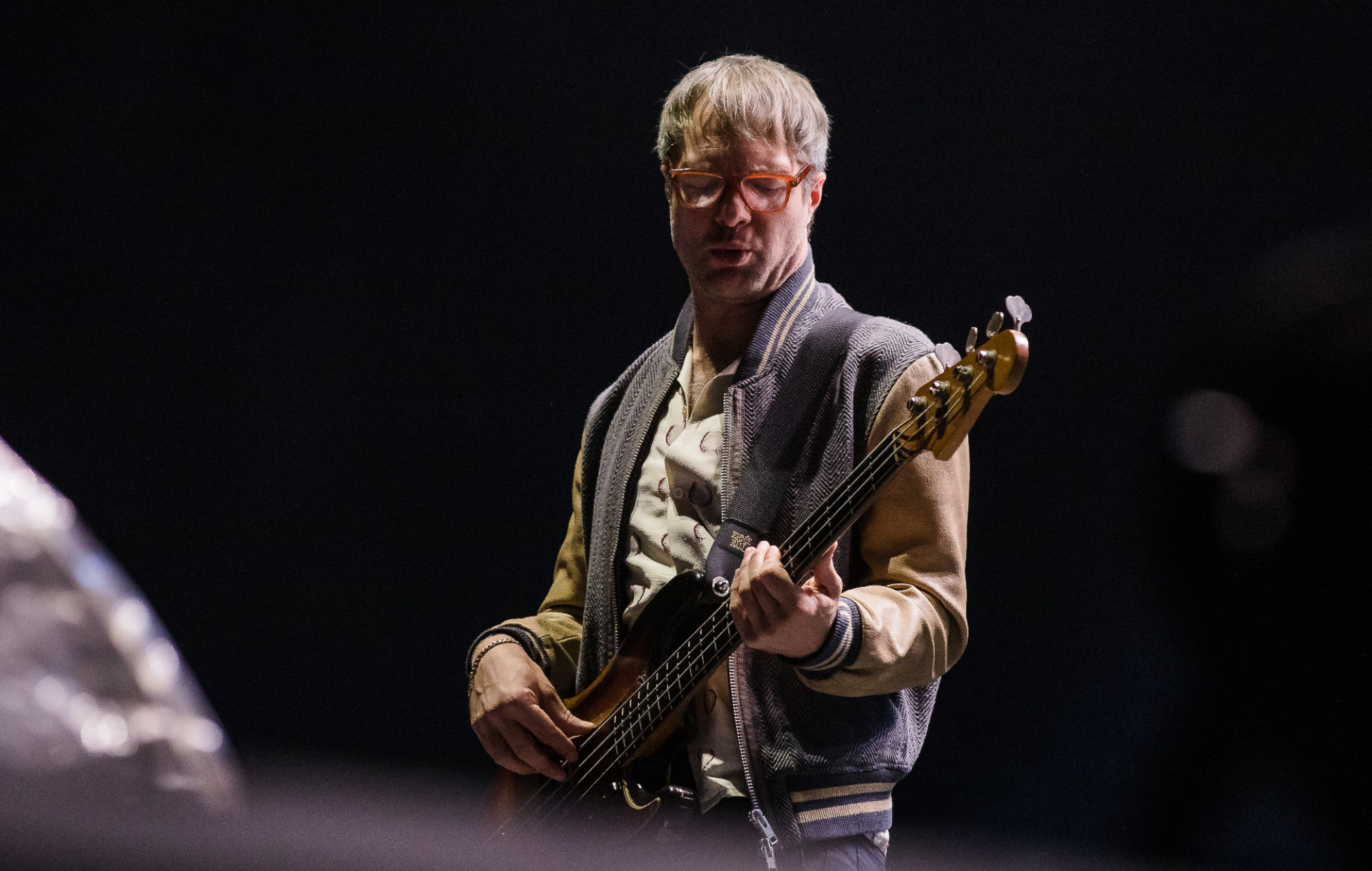
Once upon a time, there were no battle royale games. Now, there are almost too many. The popularity of games like Player Unknown‘s BattleGrounds saw a whole host of imitators seen in its wake. Some, like Fortnite and Call Of Duty: Warzone, have broken free and gone to stratospheric heights as some of the biggest games in the world. Others have carved their own unique paths, finding an unfurrowed niche, like the slow-burn of Hunt: Showdown or the brutal misery of Escape From Tarkov.
Many have simply come and gone, flavour of the month additions to IPs or franchises. Call Of Duty: Warzone was a late addition to the franchise that bucked the trend. But given the money and power behind the big three (Apex Legends, Warzone, Fortnite) how do you even begin to make a new battle royale?
- READ MORE: ‘El Paso, Elsewhere’ is ‘Max Payne’ with break-up trauma – and it wants to change the industry
For Sharkmob the answer appears to be: do everything differently, and come at an angle no-one expects, by making a battle royale based on the cult classic RPG franchise, Vampire the Masquerade. That gives us Vampire The Masquerade: Bloodhunt, a game where each player is a super-powered vampire, running up walls in a rain-slick Prague night, hunting unsuspecting humans, other vampires, and anti-bloodsucker special forces unit, Entity.
Producer David Sirland describes the appeal of the game as “The complete freedom of movement and the tempo of gameplay combined with a refreshing, urban, vampire take on the genre.”
I had a chance to join a two-hour play session ahead of July’s closed Alpha, and even after years of playing battle royales, Bloodhunt instantly offered something different.
Within minutes it was easy to grasp the importance of the tall buildings in Prague, the tightly knit networks of streets like a rat maze, where skirmishes take place between vampires ducking in and out of cover. Up above, players lept around rooftops, using scant structures and building height variations to mask your approach, or dodge a hail of gunfire. By adding verticality, the game opens up new angles for attack, adding fresh perspective to engagements: a great hook that synthesis well with the map design and fiction.
Game director Craig Hubbard explained some of the challenges of designing the city: “A city map presents a lot of challenges. Especially a historical European city where you spend a lot of time on rooftops.” Given how high your jumps take you, and how easy it is to scramble up sheer walls, you do spend a lot of time up high. “We’ve put a ton of effort into making sure players can orient themselves, locate loot, and experience tactical variety as they move from area to area.” said Hubbard.

It feels instantly novel, to the point where you can’t imagine these vampires doing anything other than scurrying up beautiful European facades, sneaking up underneath other players, as well as behind them and from above them. Hubbard explains that they tried to strip it back down to basics, with little success: “We actually did a test with a more traditional BR-style map, but it just wasn’t that fun. “Our gameplay is all about fast, fluid traversal, trying to blindside or evade enemies, all of which fit naturally and feel really fun and exciting in a tight, vertical environment.”
“I get frustrated in other games where I come to an obstacle that I have to navigate around.” says Hubbard, and you can see why. Other battle royales don’t offer this kind of movement. Tactical position is high on every player’s mind when playing Warzone or Apex Legends, but Bloodhunt changes all that. “Being able to climb anything in the game world and either engage or disengage in really fast, flexible ways is hugely entertaining for me.”
Even Bloodhunt‘s approach to the ever-encroaching circle, a staple of the genre, is totally different. Rather than a ring, it’s an amorphous shape that clings closer to the streets and rooftops, funnelling vampires into harrowing gauntlets, forcing them to fight hard. Hubbard explained that initially people pushed back against the change, “we got feedback that the gas should be a circle like every other battle royale, but eventually people started to view its irregular shape and unpredictable movement as something interesting and different.”

The change to the gas also comes with changes to other battle royale staples. Whilst ammo, armour and guns are all looted from shops and cars on the street, Bloodhunt also introduces the idea of feeding on certain NPCs to get buffs to special ability recharges, damage reduction, and more. Skulking through the shadows to feed on humans you’ve spotted with your extra-sensory vision modes is a neat touch, adding objectives beyond hunting and killing others, biding your time to buff up is as valid as ambushing teams trying to do the same.
Tougher teams of Entity soldiers also guard guaranteed high-tier weapons and gear, and can also be fed on for buffs, but these will need a concerted team effort to take down, and the noise of conflict attracts other teams, which can be a good way of inciting conflict or setting up an ambush, as I found out in my play session.

With eight classes across four archetypes, Bloodhunt has a fair amount of nuance in its team composition. The more melee orientated classes gain a long-distance shockwave and a superhero-style ground pound, coupled with a powerful second jump. Elsewhere, other classes swap the jump for a clone projection or invisibility. One particular vamp was able to send out clusters of bats to act as alert mines, a great way of doing long distance spotting, or making it tougher for players to sneak up on you. Hubbard tells me that these classes “we draw heavily from the Vampire: The Masquerade rules and lore, which is a lot more grounded in reality than some vampire IPs” so it seems like turning into bats or mist is off the cards for the time being.
Grounding the experience in the Vampire: The Masquerade setting required the team to form a close relationship with the team that handles its fiction. Sharkmob’s co-founder and communications director Martin Hultberg explained that their work even resulted in cross-pollination: “some of the stuff we have created has actually made its way into the core rulebooks” but also that Bloodhunt is expected to be ” a different type of experience than other Vampire: The Masquerade games”. Fans of the series will know that the setting spends most of its time dealing with duplicitous social-interaction and vampire-based intrigue, whereas Bloodhunt is all about leaping from rooftop to cartop whilst blasting other vamps with an epic level Tommy Gun, Hubbard assures us that despite this, “we very much want to make an action-oriented VtM experience, not an action game with Vampire: The Masquerade trappings slapped onto it”

Key to this success looks to be in the game’s evolving hub, The Elysium. A moody gothic cathedral where the various Primogens, or clan ambassadors, congregate and let players talk to them for story snippets and cosmetic upgrades. This is where players will experience most of the game’s narrative hooks, with Hultberg saying “we felt we needed to create a space suited for consuming stories and teach the player about the world they were in. The Elysium allows that, without creating stressful situations in the middle of the match.”
Walking around The Elysium between matches and seeing the various clan vampires skulking in corners fits the tone of the setting well, their feigned ignorance at the violence outside a neat representation of the subterfuge and duplicity that a battle royale can’t really give players. Hubbard suggests that over time, the studio will build on and expand on narrative elements over time based on player reactions and feedback.” but that they are also keen on making a strong, competitive PvP game: “[we] don’t want to inconvenience players who just want to get in and play, so we’ve approached narrative as something players can choose to engage with if they’re interested but can safely ignore if they aren’t.”
Bloodhunt is a curious proposition then, a battle royale that’s more focussed on movement than the current big three, that also has a strong existing base of lore to ground itself in. It’s a strange proposition on paper, but in play it really works. The fantasy of being a vampire is great, blindsiding opponents with a well-planned jump followed by a shotgun blast to the face, or dropping from a rooftop to slash someone up with a katana whilst the rain pours and the red mist encroaches does a great job of conveying both the power fantasy inherent in being a vampire, but also how fragile that power is when it’s other vamps you’re up against.

There are definitely rough edges in the Alpha, but the promise is there, and I was keen to get back into the fray after our session, especially after I managed to exsanguinate someone during a tense free-for-all gunfight, putting them down for good before leaping onto a balcony to rain fire down. Or the other time, where our team descended from the rooftops to flank a graveyard skirmish, emptying hot lead into a confused team who tried to scurry up the nearby buildings fruitlessly.
Whether or not it has the long-lived power of its vampire subjects remains to be seen. Hubbard wants players to give it a shot, and to embrace the differences with open arms: “We’re hopeful that if people try and enjoy our game and see its promise”. With a July closed Alpha already open for sign-ups, it isn’t going to be long until the children of the night descend on Prague again, maybe we’ll see you there.
The post ‘Bloodhunt’ preview: Sharkmob’s unlikely battle royale surprises with dark delights appeared first on NME.








